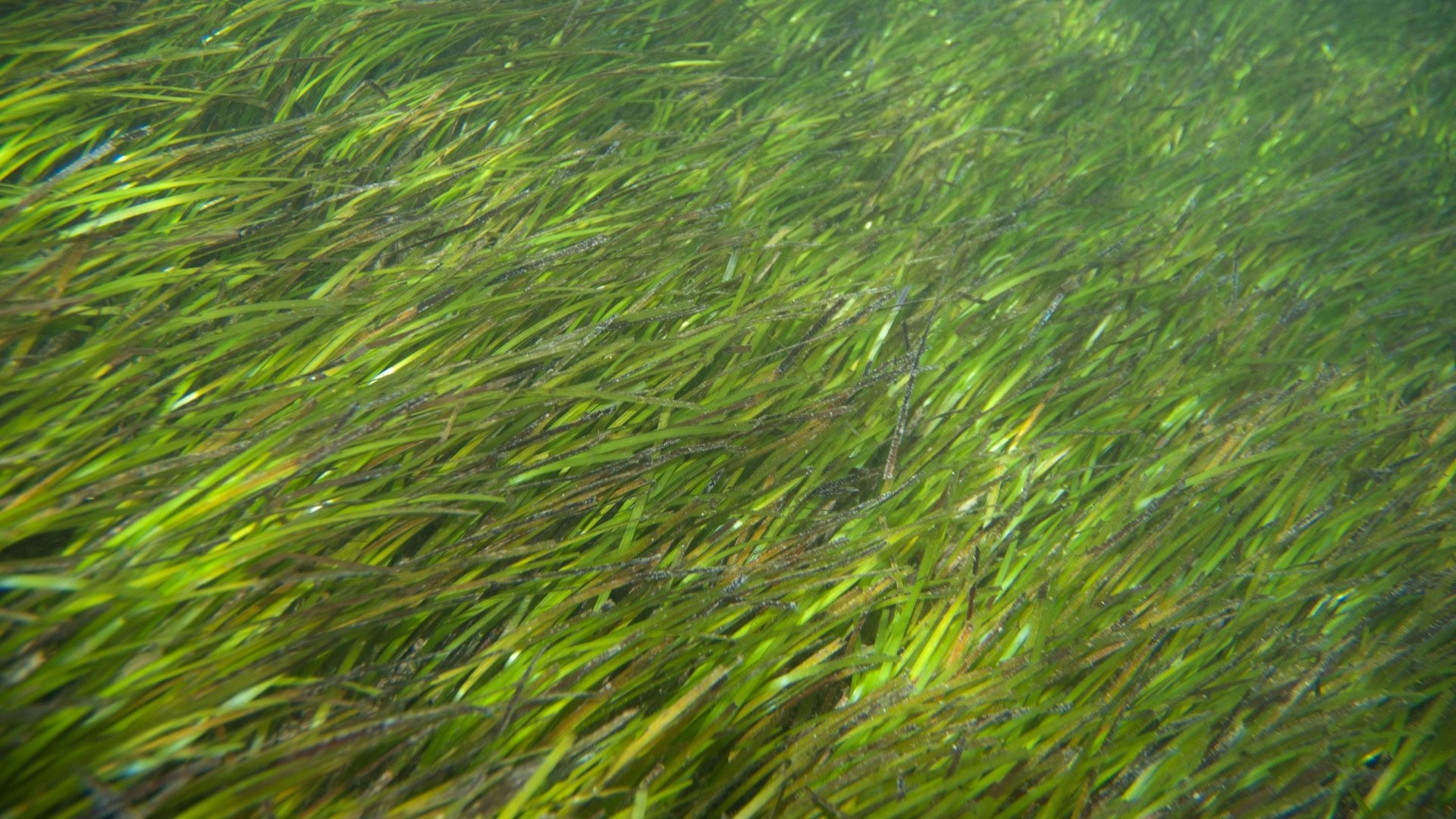Oceans are losing a football field of seagrass every 30 minutes
Seagrasses are flowering marine plants that live in shallow coastal waters almost everywhere in the world. The more than 70 species of seagrass provide an important habitat for thousands of ocean animals, from tiny invertebrates, crabs, and turtles to large fish and birds.


Seagrasses are flowering marine plants that live in shallow coastal waters almost everywhere in the world. The more than 70 species of seagrass provide an important habitat for thousands of ocean animals, from tiny invertebrates, crabs, and turtles to large fish and birds.
Equally if not more important, seagrasses also are natural carbon sinks—even more effective at soaking up heat-trapping carbon pollution than forests on land. They soak up carbon in their leaves, and when they die, they decompose far more slowly than terrestrial plants, so that carbon remains buried for hundreds of years.
“Seagrasses are the ultimate natural carbon sink,” said Richard K.F. Unsworth, a lecturer in marine biology at Swansea University in the UK. “In healthy seas, seagrasses are so productive you can see oxygen rapidly bubbling through the water column as they photosynthesize on a sunny day.”
Emilia Röhr, a doctoral student at Åbo Akademi University in Finland who recently led a study on carbon storage in seagrasses, agreed. “In addition to the huge potential seagrasses possess for carbon sequestering—and therefore buffering against climate change—seagrasses offer multiple other ecosystem services essential for human livelihoods such as fish nurseries, protection from erosion, water quality management, and nutrient regulation,” she said.
But overfishing and coastal pollution have taken a toll on seagrasses, depleting them at an alarming rate. Recent studies from places such as Florida, Singapore, Indonesia and the UK have documented widespread seagrass loss, according to Unsworth. The authors of one study released last year, in fact, said that a football field of seagrass is disappearing roughly every half-hour.
“The biggest threat to seagrass around the world remains poor water quality,” Unsworth said. “Seagrasses are photosynthetic, they need lots of light to grow. The more sediments, nutrients and other pollutants that come down our rivers, the more turbid our coastal seas become and the faster algal competitors of seagrass suffocate these plants.”
Because society has neglected the conservation of these ecosystems for so long, there is little detailed data available to understand how much seagrass once existed and how rapidly it has been lost, he added. Furthermore, “we don’t know nearly enough about where seagrass is,” he said. To that end, Unsworth has created a website that allows citizen scientists to help map the location of seagrass.
“Where we do have long-term data there are many examples of seagrass loss,” he said. “There are also many instances from human memory around the world where whole estuaries and bays that were once full of seagrass are now just muddy, turbid environments devoid of these prairies of the sea.”
New research underlined the value of natural ecosystems in fighting climate change. It called for preserving forests, farmlands, grasslands and seagrasses, all of which scrub carbon pollution from the atmosphere. The study, published in Science Advances, further found that strengthening these carbon sinks could shrink the country’s net annual carbon output by up to 21%.
The paper called for reviving grasslands, planting more trees in forests, and waiting longer to harvest timber. It also recommended that farmers plant cover crops when their fields otherwise would be bare. Cover crops draw carbon out of the atmosphere and return it to the soil. The study further called for curbing water pollution to protect seagrass, restoring lost seagrass, and allowing new seagrass to grow in areas flooded by rising seas.
“There is value in restoring seagrasses, and in creating new seagrass meadows, because these actions cause more carbon to get stored in the soils underneath,” said James W. Fourqurean, director of Florida International University’s Center for Coastal Oceans Research, and a co-author of the paper.
Fourqurean has modeled what happens when seagrasses vanish. One study he conducted estimated the ongoing loss of seagrasses could release up to a billion metric tons of carbon dioxide into the atmosphere each year, an amount that is close to the annual carbon emissions of Japan. Still, conservatively, he says the real number is probably less than half a billion metric tons annually, roughly the carbon output of France.
There are potential solutions to the problems facing seagrass. In Indonesia, for example, “we’ve just led a project that planted thousands of trees along river banks to stop sediments and nutrients flushing into the ocean, and we’re also just commencing projects to plant seagrass in Wales,” Unsworth said. But, he added, “conservation is certainly the best bet, as restoration is unreliable, difficult, and very expensive.”
The “best example of seagrass hope” comes from Tampa Bay, where locals have radically improved water quality, Unsworth said. Seagrass is more now abundant there than it was in the 1950s, although recent hurricanes may have reversed some of this growth.
While much attention in recent years has focused on coral reefs, Unsworth believes that marine conservation must broaden to include seagrasses. Corals may be more exotic and pretty, but one should never dismiss the richness and importance of seagrass, Unsworth said.
“Seagrass is green, sometimes a little slimy and not seen as exciting,” Unsworth said. “The abundant and diverse animal life in it hide—that’s why they’re there. So it often appears to contain few fish. This couldn’t be further from the truth. Seagrass is certainly the poor cousin of coral, but another way of thinking about it could be the story of the ‘Ugly Duckling.’ Maybe we’re starting to see signs of feather development. In years to come, seagrass may become the beautiful swan.”
This story was originally published by Nexus Media.